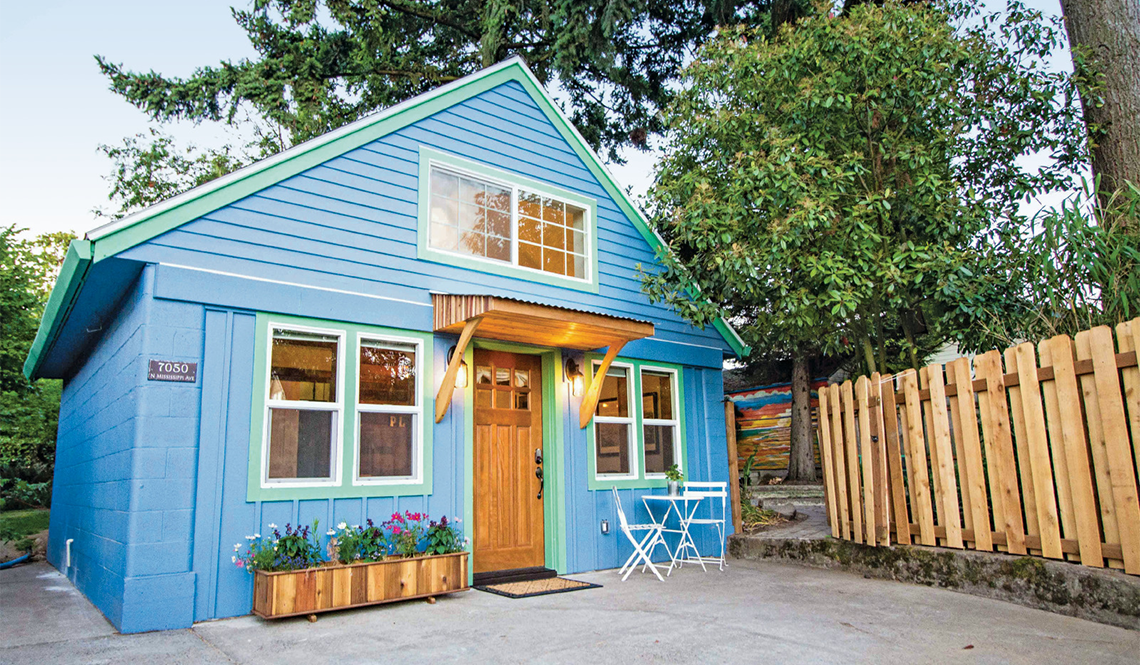Accessory Dwelling Units, Defined
- Select a language for the TTS:
- UK English Female
- UK English Male
- US English Female
- US English Male
- Australian Female
- Australian Male
- Language selected: (auto detect) - EN

Play all audios:

Facebook Twitter An ADU is always the smaller of two dwellings on a property. Renting out this 350-square-foot garage-conversion ADU in Portland, Oregon, helps the property owner, who lives
in the lot’s primary residence, pay her home mortgage. It's also possible for an existing home to become the ADU, such as when a larger house is built and becomes the primary dwelling.
(Photo courtesy AccessoryDwellings.org)
Although many people have never heard the term, accessory dwelling units — or ADUs — have been around for centuries and are identified by many different names. To be clear about what’s being
discussed:
An ADU is a small residence that shares a single-family lot with a larger, primary dwellingAs an independent living space, an ADU is self-contained, with its own kitchen orkitchenette, bathroom and sleeping area An ADU can be located within, attached to or detached from the main residence An ADU can be converted from an existing structure (such as a garage) or
built anewADUs can be found in cities, in suburbs and in rural areas, yet are often invisible from view because they’re positioned behind or are indistinct from the main houseBecause ADUs
are built on single-family lots as a secondary dwelling, they typically cannot be partitioned off to be sold separately An ADU can provide rental income to homeowners and an affordable way
for renters to live in single-family neighborhoodsAn ADU can enable family members to live on the same property while having their own living spaces — or provide housing for a hired
caregiverUnlike tiny houses, ADUs are compact but not teeny, so they’re a more practical option for individuals, couples and families seeking small, affordable housing For homeowners looking
to downsize, an ADU can be a more appealing option than moving into an apartment or, if older, an age-restricted community ADUs can help older residents remain in their community and “age
in place” ADUs are also known as ...accessory apartment alley flatback housebackyard bungalowbasement apartmentcarriage house coach housegarage apartmentgranny flatguest house or
cottagein-law suitelaneway housemother-daughter house multigenerational houseohana unitsecondary dwelling unitsidekick
Although most local governments, zoning codes and planners in the United States use the term accessory dwelling unit or ADU, these small homes and apartments are known by dozens of other
names. The different terms conjure up different images.
(Who wouldn’t rather live in a “carriage house” than in an accessory or “ancillary” unit?)
Even if you’ve never heard of accessory dwelling units or ADUs, you have likely heard of — and perhaps know the locations of — some of the home types listed in the box that accompanies this
article.
This article is adapted from The ABCs of ADUs, a publication by AARP Livable Communities. Learn more below.
MORE ABOUT ACCESSORY DWELLING UNITS Visit AARP.org/ADU for links to morearticles and to order AARP's free publications about accessory dwelling units.
More from AARP.org/Livable
Use the dropdown to choose a livability topic.
Select a Subject Select a Subject AARP.org/Livable Home Page AARP Age-Friendly Network AARP Community Challenge AARP Livable Communities Newsletter AARP Livable Map Bicycling Community
Engagement Community Health and Wellness Community Resilience Community Diversity Economic Development High-Speed Internet Access Housing Inspiring Examples Livable Lessons Local Solutions
Placemaking Public Places and Outdoor Spaces Rural Livability Social Participation Surveys and Statistics Transportation Walkability Workshops and Conferences Zoning and Land Use Unlock
Access to AARP Members Edition
Join AARP to Continue Already a Member? Login
AARP NEWSLETTERS
%{ newsLetterPromoText }%
%{ description }%
Subscribe See All NewslettersPrivacy Hub